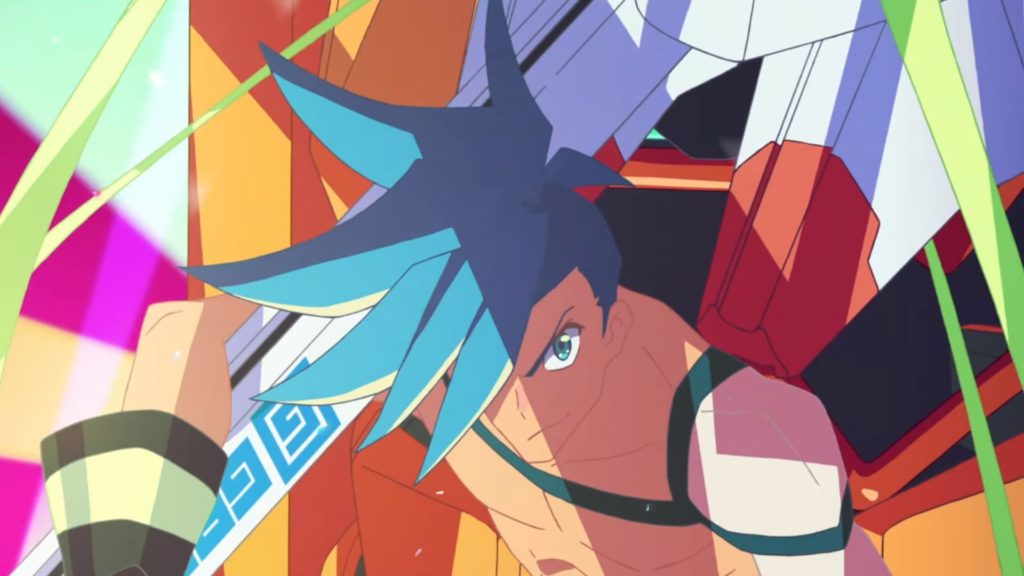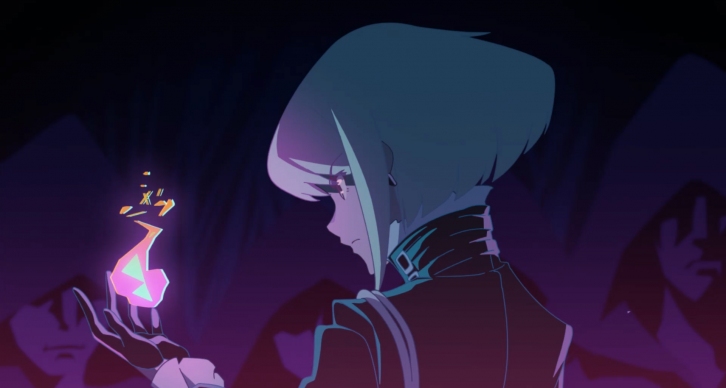
Since its founding in 2011, Studio Trigger has gained a reputation as the trailblazing punks of the anime scene. Their style, largely defined by studio co-founder and director Hiroyuki Imaishi, utilizes punchy, manic, and creative animation to deliver a particular brand of infectious hype. Although their television productions may have their shares of ups (Kill la Kill) and downs (Darling in the Franxx), whenever Imaishi is at the helm it’s fair to assume that the proceedings will at least be visually interesting.
The studio’s first feature film Promare feels like a loving amalgamation of what came before, blending the studio’s tropes into a frenzied, and thoroughly entertaining spectacle. While the opening half falls a little too readily into cliches, it eventually blasts apart this archetypical storytelling in a grand display of escalating theatrics. The idiosyncrasies that Trigger is known for are all present; the obsession with title cards, frequent proper noun usage, exaggerated character designs that ignore continuity for the sake of hype, Gainax poses, drills, ridiculous proclamations that don’t make any sense until they do, and a general fascist-smashing attitude are woven together into a ballad of gleeful insanity.

2D and 3D animation are melded to create a bevy of colorful fight sequences which would be impossible to stage if only one of these mediums was utilized. While the transition between the two can be slightly awkward at times, the character designs feel designed to look good in both forms, easing the usual disconect between CGI and traditional animation. The soft-line work and gorgeous color schemes combine with sumptuous animation to make for a production which is dazzling from beginning to end.
The story is set in a world in the wake of apocalypse. Thirty years ago humans began to spontaneously combust, resulting in a global calamity that claimed the lives of half the Earth’s population. In light of this, society developed techniques and organizations aimed to limit the damage of those who go berzerk. The flame-users, known as the Burnish, are feared and reviled, leading to discrimination and mass imprisonment. We follow Galo Thymos, a rookie member of the elite firefighting team known as Burning Rescue, whose main purpose is to save civilians endangered by Burnish attacks in the city of Promepolis. However, after coming into direct contact with Mad Burnish, a sect of Burnish who are deemed terrorists by Galo’s idol Mayor Kray Foresight, Thymos begins to question the motives of the city government. From there, the story builds towards an increasingly absurd series of revelations that may feel familiar to fans of these creators, but are nonetheless delightfully ridiculous.

Admittedly, the appeal here isn’t the uniqueness of the themes, story-beats, or characters, but rather how the animation captures a singular sense of attitude towards these elements. Some of the early scenes feel perfunctory because they don’t fully lean into this aspect of the storytelling, with unconvincing conversations and rote romance sunk by lackluster dialogue. However, after a few rocky early sequences, the narrative kicks up a gear, resulting in a nonstop cavalcade of exciting battles, dastardly plots, and reveals that climax in a showdown that will likely go down in the annals of anime-history.
Much like Kill la Kill, Promare paints a picture of savage government oppression and bubbling animosity through its jerky, violent animation. The color-palate evolves wildly, enforcing the mood of any given scene through deep purples and beautiful candy-colored hues, increasing the impact of the various crescendoes in tandem with the soundtrack. Even character designs shift and exaggerate as the climax builds, the full audio-visual landscape morphing as this world bends under the weight of apocalypse. The final half of the film utilizes the malleable, limitless potential of animation, to deliver a truly memorable showdown between the powers of close-minded selfishness and altruism.
Admittedly, Promare is quite uneven. Early on it struggles to establish its characters, and it’s not until the proceedings veer towards spectacle in the second half that things become truly entertaining. That said, the highs of this sequence reach the stratosphere. The climax feels like a loving tribute to the studio’s previous work and the decades of anime that inspired it, teasing at the medium’s potential to deliver wide-eyed fantasy. It may resemble a loud, dumb blockbuster in some ways, but Promare is so delightfully self-referential and visually inventive that it leaves its derivative peers in the dust.
Rating: 4/5






